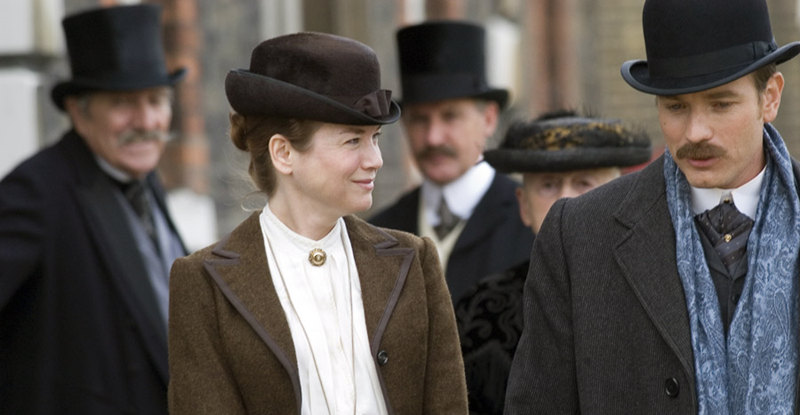My wife and I loved “The West Wing,” so we were interested to see “House of Cards,” an American political drama that’s actually an adaptation of a 1990 BBC miniseries—which itself was based on the 1989 political thriller House of Cards, a bestseller by Michael Dobbs.
The entire 13-episode first season, starring Kevin Spacey and Robin Wright, premiered last February on Netflix and comes to Blu-ray and DVD on June 11. There’s political intrigue, backroom deals, and some fast talk involving complicated issues, but that’s where the similarities between “The West Wing” and “House of Cards” end. You can sense it from the title sequence, in fact. “The West Wing” had a rousing and romantic theme with shots of the cast and everything high school students see when they visit Washington, D.C. “House of Cards” offers an edgier song with time-lapse photography showing a mixture of the good, the bad, and the seedy that the nation’s capital has to offer.
Characters in “The West Wing” were, for the most part, idealists who believed in making a difference and helping to create a better world. They were a likable lot, no matter what your party affiliation or personal politics. But you can’t say the same about the main characters in “House of Cards”—the first two episodes of which were directed by David Fincher.
Kevin Spacey plays Democratic lawmaker Francis “Frank” Underwood, who represents South Carolina’s 5th congressional district and has served for some time as the House Majority Whip. He has power and prestige, but he wants more. He’s cynical, he uses people, he manipulates the system, he skirts the law, he’s self-centered, and he’s as duplicitously insincere as a snake-oil salesman. He’ll lie to your face if it suits his purpose, or he’ll blackmail you—because that, he’s come to believe, is the real way that Washington works.
His wife, Claire (Robin Wright), isn’t much better. As the head of a non-profit agency called the Clean Water Initiative she shows that she can be just as ruthless, cold, determined, and single-minded as her husband when it comes to achieving her goals, and she doesn’t blink an eyelash over ruining 19 peoples’ lives in the process.
Even the show’s most fresh-scrubbed character, Zoe Barnes (Kate Mara)—a brand new reporter at The Washington Herald who wants to tweet and blog and thinks print journalism is dying—shows that she too can become intoxicated by the power and position that seems there for the taking in D.C. In fact, her idealism is tainted early when she uses a photo someone captured of Rep. Underwood checking out her posterior as she entered a gala in order to get his cooperation as an unnamed source of information that will allow her to rise quickly in the world of Washington journalism. She uses him, he uses her, and soon she learns that game playing can be as advantageous as a push-up bra.
The series begins with Rep. Underwood learning that the Democratic president-elect has gone back on his promise to make him Secretary of State, then charts his calculated campaign to work “for” the president on the surface, while undermining him and building his own power base every chance he gets. Chief among his pawns is Rep. Peter Russo (Corey Stoll), a Pennsylvania Democrat who does Underwood’s bidding after the Whip threatens to expose his problem with alcohol and drugs.
I said there were only a few similarities to “The West Wing,” but I was wrong. As with that long-running drama, the writing is often brilliant and the acting is as solid as can be. It’s one of the best dramas on TV today.
I have only one criticism, really, and it’s that not all of the times when Rep. Underwood talks directly into the camera are successful, and sometimes those rather frequent moments seem not as well written. But some of those kick-down-the-fourth-wall moments are downright hilarious—as when Underwood is speaking fervently and passionately about God and hate and loss at the funeral of a 17-year-old constituent and using his own loss of his father as a point of comparison. In the middle of his tear-jerking sermon, Underwood turns to the camera and says, coldly and matter-of-factly, that his father really didn’t mean much to him, which deliciously underscores how routinely and persuasively Underwood can be despite feeling totally the opposite. Wright is also a revelation as Claire, with the two of them peas in the same bitter pod.
Here’s a rundown on the episodes and descriptions included on the back of a tipped-in card:
Chapter 1—When the newly elected president reneges on a promise, Francis and Claire decide to sever all allegiances and toss the rules out the window.
Chapter 2—Francis uses a young reporter, Zoe Barnes, to spin a story that puts the White House on its heels. Claire makes a cold-blooded move at work.
Chapter 3—Francis must leave union negotiations to deal with a crisis in his home district. Zoe negotiates the politics of being a journalist on the rise.
Chapter 4—Francis shakes down the congressional leadership. Peter Russo must choose between politics and family.
Chapter 5—Francis’ fight over the education bill threatens Claire’s own ambitions. Zoe mixes work and play.
Chapter 6—Francis strikes back at the striking teachers. Claire is caught off-guard by a deathbed confession.
Chapter 7—Francis wins a major battle, but doesn’t pause to rest on his laurels. Peter must face his past. Stamper (Michael Kelly, as Underwood’s chief of staff) hushes a secret.
Chapter 8—Francis is honored at hisw alma mater, while Peter returns to Philly. Both men tackle unfinished business.
Chapter 9—Russo hits the road with V.P. Matthews (Dan Ziskie). Francis and Stamper try to whip support in congress. Claire looks out for herself.
Chapter 10—Rebellion on all fronts, Claire defies Francis, Zoe finds comfort in someone new, and Peter makes an ultimatum.
Chapter 11—Claire fuels an old flame. Peter wrestles with his demons. Francis crosses the point of no return.
Chapter 12—Francis must make an unforeseen detour. Zoe, Lucas (Sebastian Arcelus, as the Washington Herald editor) and Janine (Constance Zimmer as a reporter who becomes suspicious of Zoe’s stories) get closer to the truth.
Chapter 13—Francis scrambles to keep his plan on track. Claire is haunted by choices old and new. Zoe poses a serious threat.
“House of Cards” would pull down an R rating for drug use, language, and nudity—though the nudity seems downplayed and far from gratuitous. I’m no fan of the packaging, though. The 13 episodes are contained on four discs that are stuffed in cardboard sleeves of a single, long fivefold. It’s hard to get them out without putting fingers all over them. You’d think Netflix and Sony teaming up could make something better.
Video:
“House of Cards” is presented in a nonstandard 2.00:1 aspect ratio, and despite my complaints about the packaging I’d have to say that the AVC/MPEG-4 transfer to 50GB discs produces some stellar video. Colors are nicely saturated yet natural looking, skin-tones vary according to individuals and again look natural. Black levels are superb, and edge delineation is strong. Even dark scenes produce a nice level of detail.
Audio:
The audio is an English DTS-HD MA 5.1 that does the job. It’s hard to tell just how good the soundtrack is, though, because “House of Cards” is a dialogue-driven show, and that means the center speaker really gets a workout. You DO hear a nice level of ambient sound, though, oozing from the rear speakers. It’s subtle enough to make you wonder if it’s the neighbors or if it’s the soundtrack. No complaints here.
Extras:
There are no bonus features included—which seems strange.
Bottom line:
“House of Cards” is a smart and compelling political drama featuring characters you don’t necessarily like, but ones you can’t seem to turn away from. Spacey and Wright are terrific, but then again so is the whole cast. It’s the flipside of “The West Wing”—a very cynical view of Washington that’s probably closer to what really happens.


